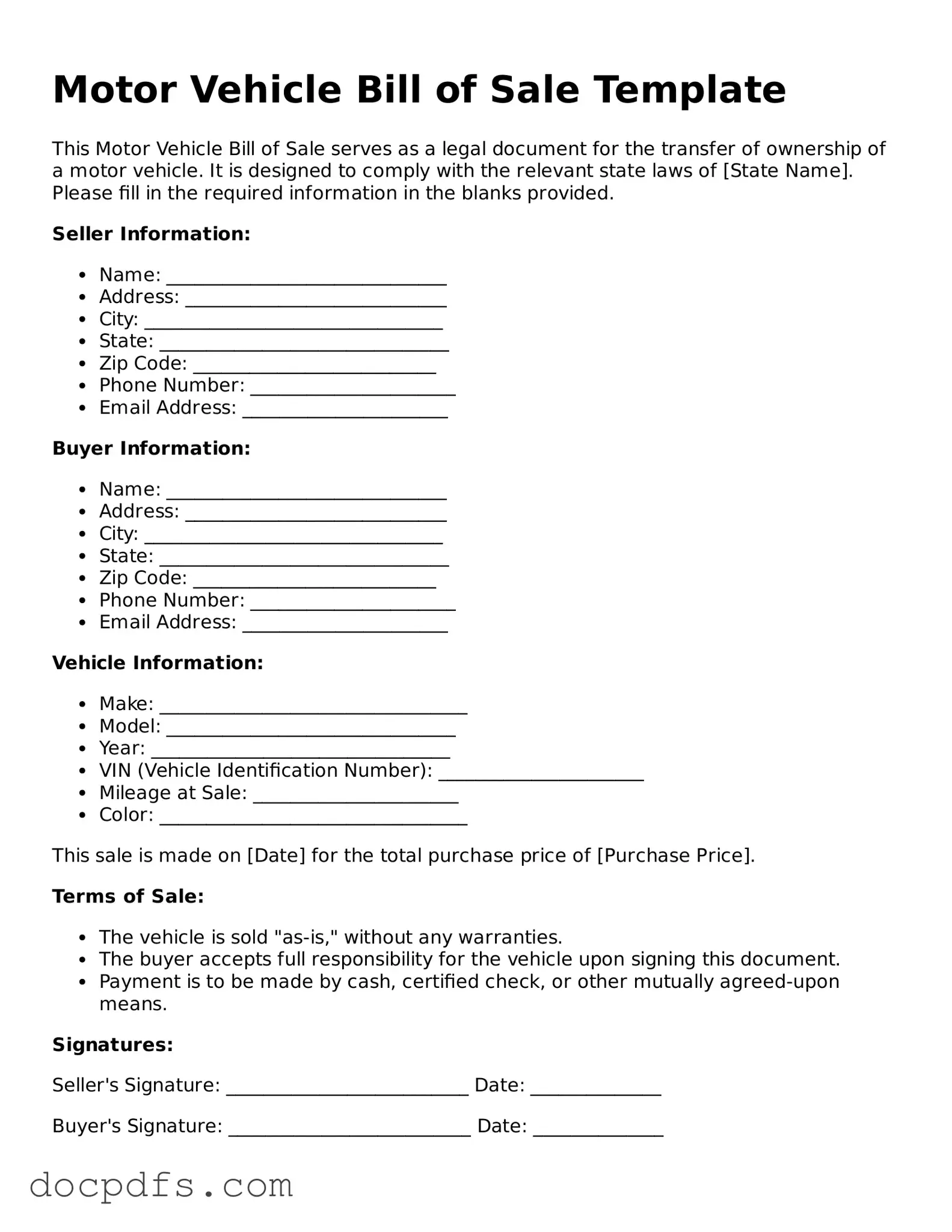What is a Motor Vehicle Bill of Sale?
A Motor Vehicle Bill of Sale is a legal document that records the sale of a vehicle from one party to another. It serves as proof of the transaction and includes important details about the vehicle, the buyer, and the seller. This document is essential for transferring ownership and may be required for registration purposes.
Why do I need a Bill of Sale for a vehicle?
A Bill of Sale is crucial for several reasons:
-
It provides a written record of the sale, which can protect both the buyer and seller.
-
It helps establish ownership and can be used to register the vehicle with the Department of Motor Vehicles (DMV).
-
It can prevent disputes by clearly outlining the terms of the sale.
A comprehensive Bill of Sale should include the following information:
-
The names and addresses of both the buyer and seller.
-
The vehicle's make, model, year, and VIN (Vehicle Identification Number).
-
The sale price of the vehicle.
-
The date of the sale.
-
Any conditions of the sale, such as warranties or "as-is" statements.
Is a Bill of Sale required in all states?
Not all states require a Bill of Sale for vehicle transactions, but it is highly recommended. Some states may require it for registration or titling purposes. It's important to check your state’s specific requirements to ensure compliance.
Can I create my own Bill of Sale?
Yes, you can create your own Bill of Sale. However, it’s important to ensure that it includes all necessary information and complies with your state’s requirements. Many templates are available online that can help guide you in creating a valid document.
Do I need to have the Bill of Sale notarized?
Notarization is not always required, but it can add an extra layer of protection for both parties. Some states may require notarization for the Bill of Sale to be valid, especially if it is used for registration. Always check local laws to be sure.
What if the vehicle has a lien on it?
If there is a lien on the vehicle, it’s important to address it before completing the sale. The seller should pay off the lien and obtain a lien release before transferring ownership. The Bill of Sale should reflect that the vehicle is free of any liens to avoid complications for the buyer.
What should I do with the Bill of Sale after the sale?
After the sale, both the buyer and seller should keep a copy of the Bill of Sale for their records. The buyer may need it for vehicle registration, while the seller should keep it as proof of the transaction. It’s a good idea to store it in a safe place.
Can a Bill of Sale be used as a title?
A Bill of Sale is not a substitute for a vehicle title. While it serves as proof of sale, the title is the official document that proves ownership. The buyer will need to obtain a title from the seller to complete the transfer of ownership legally.
What if I lose my Bill of Sale?
If you lose your Bill of Sale, you can often recreate it if you have the original details. Contact the other party involved in the transaction to see if they still have their copy. If necessary, you may need to draft a new Bill of Sale, ensuring it includes all relevant information.
